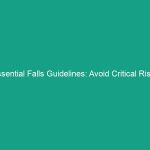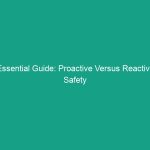Introduction
Good morning team! Today, we’re diving into a crucial topic that affects each of us in the workplace: Essential Prime Contractor Guidelines: Avoid Critical HSE Risks Today. Understanding these guidelines is vital for ensuring not only our Safety but also the Safety of our colleagues and everyone on the job site. By following these essential practices, we can significantly reduce the risks associated with health, safety, and environmental (HSE) concerns.
Understanding Essential Prime Contractor Guidelines
The term Essential Prime Contractor Guidelines refers to the framework and practices that prime contractors must follow to uphold health, safety, and environmental Standards during project execution. These guidelines are designed to protect workers, ensure compliance with Regulations, and promote a culture of safety.
Importance lies in the fact that HSE practices directly impact our daily operations. Ignoring these guidelines can lead to serious accidents, injuries, and even fatalities. A common misconception is that Safety Guidelines are merely bureaucratic hurdles; in reality, they are crucial for preserving life and maintaining a productive work Environment.
Key Hazards, Risks, and Safety Considerations
Understanding the specific Hazards and risks associated with our work is vital. Here are some key concerns:
- Workplace Injuries: Falls, slips, and trips are leading causes of injuries on job sites.
- Equipment Safety: Improper use of machinery can lead to severe accidents.
- Hazardous Materials: Exposure to chemicals can have long-term health Effects.
- Environmental Risks: Failure to manage waste and pollutants can damage the environment.
Ignoring safety protocols can lead to devastating consequences, including legal liabilities, financial losses, and, most importantly, harm to our colleagues. We must remain vigilant and proactive in addressing these risks.
Best Practices, Procedures, & Actionable Advice
To mitigate these risks, here are some essential Best Practices and Procedures that every employee should follow:
Step-by-Step Safety Procedures
- Conduct Regular Safety Training: Ensure everyone is trained on the latest safety protocols and procedures.
- Perform Job Hazard Analyses (JHA): Assess potential hazards before starting any task.
- Use Personal Protective Equipment (PPE): Always wear the required PPE for your specific tasks.
- Maintain Equipment: Regularly inspect and maintain all tools and machinery to ensure they are functioning safely.
- Report Hazards: Immediately report any unsafe conditions or practices to your supervisor.
Real-life incidents illustrate the importance of these practices. For example, a construction worker who neglected to wear a hard hat suffered a serious head injury from falling debris. This incident could have been avoided had proper Safety Measures been enforced.
Regulations, Standards, and Compliance
Compliance with regulations is critical for maintaining a safe work environment. Familiarize yourself with the following standards:
- OSHA Regulations: The Occupational Safety and Health Administration sets forth guidelines that must be followed to ensure Workplace Safety.
- ISO Standards: International Organization for Standardization guidelines provide frameworks for safety management.
- Company-Specific Policies: Always adhere to the safety policies set forth by our organization, as they are tailored to our unique work environment.
Compliance is not just about avoiding penalties; it is essential for protecting employees and fostering a culture of safety. Understanding and following these regulations helps prevent incidents and ensures we all return home safely each day.
Employee Engagement & Discussion
Now, let’s take a moment to reflect. What safety challenges have you encountered related to prime contractor guidelines? How can we improve our adherence to these essential practices? Your insights are invaluable in fostering a safer workplace.
Conclusion & Key Takeaways
To wrap up, remember that adhering to the Essential Prime Contractor Guidelines is not just a requirement; it’s a commitment to each other’s safety. By understanding the risks, following Best Practices, and complying with safety regulations, we can significantly reduce the likelihood of accidents and injuries on the job site.
Thank you for your attention and for your ongoing commitment to safety. Together, we can create a safer work environment for everyone. Let’s prioritize safety in everything we do!


